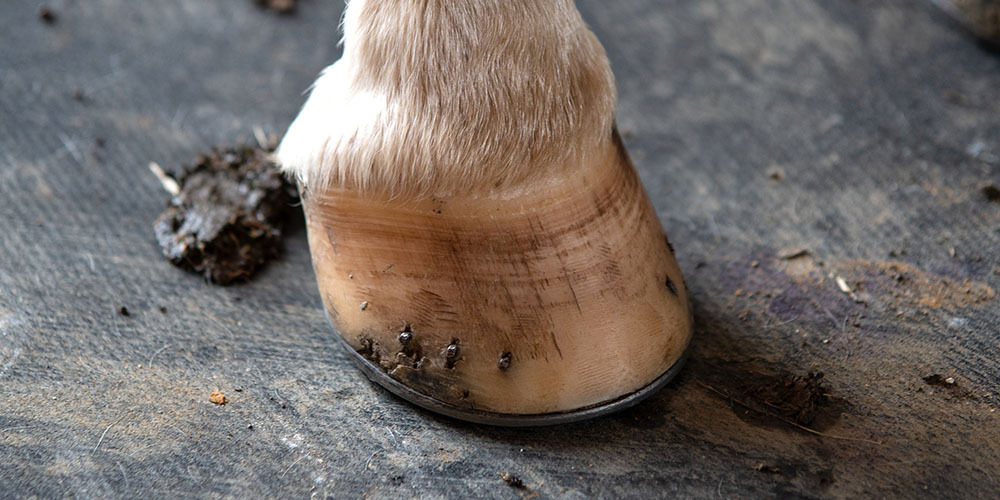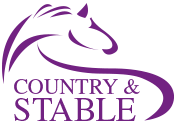Choosing Horse Bedding
Jan 24th 2023

When choosing the right bedding for your horse, and especially during the colder months, it may not be as easy as you envisioned. How cold/warm is it, how much do you spend, what material is best? With so many different types to choose from it can become quite daunting when you want to make the right choice for your horse.
Here is the low-down on the main types of bedding available, so you have a little more information at your fingertips to help you make the all-important decision.
Wheat straw
Wheat straw is one of the most popular options available. As one of the cheapest horse bedding, straw can be a great option. Straw can be used as deep litter as it is quite absorbent, warm and is easy to muck out. This type of straw also rots down well and makes good garden fertiliser. It is worth checking that the straw is of good quality. Poor quality straw can be very dusty and can go mouldy if not stored properly. This downside is, it can be dusty and can prove particularly dangerous to horses that suffer from respiratory disorders.

Chopped straw
Chopped straw is made from either wheat straw or rape straw. This has been chopped and dust extracted and very often sterilised. This type of bedding is extremely absorbent and easy to dispose of as it rots down quickly. Slightly more expensive than normal straw, but can be a cheaper alternative to other horse bedding options, as it is a by-product from wheat and rape production. Chopped straw is extremely versatile in the fact this can be used for a traditional bed, a deep litter bed or used in conjunction with rubber matting. Some types of chopped straw bedding are treated with a light sent such as, eucalyptus or lavender. This not only helps with the ammonia smell but also helps to prevent consumption.
Wood shavings
Wood shavings are another popular choice in horse bedding as, like straw, it’s very absorbent and easy to muck out. It is, however, important to check it has been specifically produced as animal bedding. As shavings from a mill for example, may contain sharp pieces that could cause splinters. Wood shavings are usually dust free, so is more beneficial to horses with dust allergies. The only downside is that it can be more expensive than other beddings but does make good deep litter that is comfortable and warm.

Wood fibre/ Wood chip
This is a relatively new product to the market that is manufactured from recycled whitewood fibre. Wood fibre is an environmentally friendly product and is generally quite dust free. It’s super absorbent, warm, comfortable, and gives some support to your horse. It is said to keep your horse cleaner as it’s free-draining and doesn’t cling to manes, tails, or rugs. The downside would be that they come in smaller bales. This is due to the weight of the product and being very absorbent, it can become heavy when mucking out. The best way to get the most from this bedding is to deep litter as its high absorbency caters for this style of bed. By using this process, you can make this bedding very cost effective.
Wood pellets
These pellets are usually made from whitewood fibre that has been compressed and is environmentally friendly. This dust free solution is highly absorbent and is claimed to soak up nine times more liquid than regular shavings. Wood pellets compost quicker than other bedding options, but you do need to add water when you initially lay down the bedding to create a comfortable, fluffy bed. Again, this type of horse bedding is best deep littered to get the most for your money.
Shredded paper
This is becoming a more popular choice of bedding due to it being relatively inexpensive. Shredded paper is a good choice for horses with dust allergies as this is completely dust free. It’s easy to store and easy to handle. It is quite absorbent and has relatively good insulation properties, so a good top up in the winter months. However, the dye from the newspaper may be prone to marking your horse’s coat and can ball-up leaving patches of bare floor.
Rubber matting
Whilst the initial outlay cost for rubber matting can be quite pricey the cost to maintain, once fitted, is very minimal. The beauty of rubber matting is it can be used with any bedding you choose. The rubber material adds warmth, is helps cushion the stable floor and reduces the risk of injury to your horse. Having said all of this, if you choose not to use a bedding that absorbs the urine you will need to have good drainage facility in your stable.

With all these options available in choosing horse bedding, you need to decide what material is best for you, your horse and your budget. You may choose to use a combination of materials to create the perfect option. For example rubber matting to offer protection and straw to absorb urine and offer warmth. Ensuring you have the correct type of bedding to suit your horse it vital. It can be a bit of trial and error to see what works best. Once you have this right - happy you, happy horse!
To help keep your bedding in tip top condition it is recommended that you muck out daily. Then if possible try to skip out throughout the day. Also, positioning your horse’s feed and water along one side should help minimise foot traffic between buckets, and hopefully manure will be deposited in one area making it easier for you to keep clean.
Check out our upcoming blog on top 10 Tips for Good Stable Maintenance for more information on keeping you horses stable clean.




